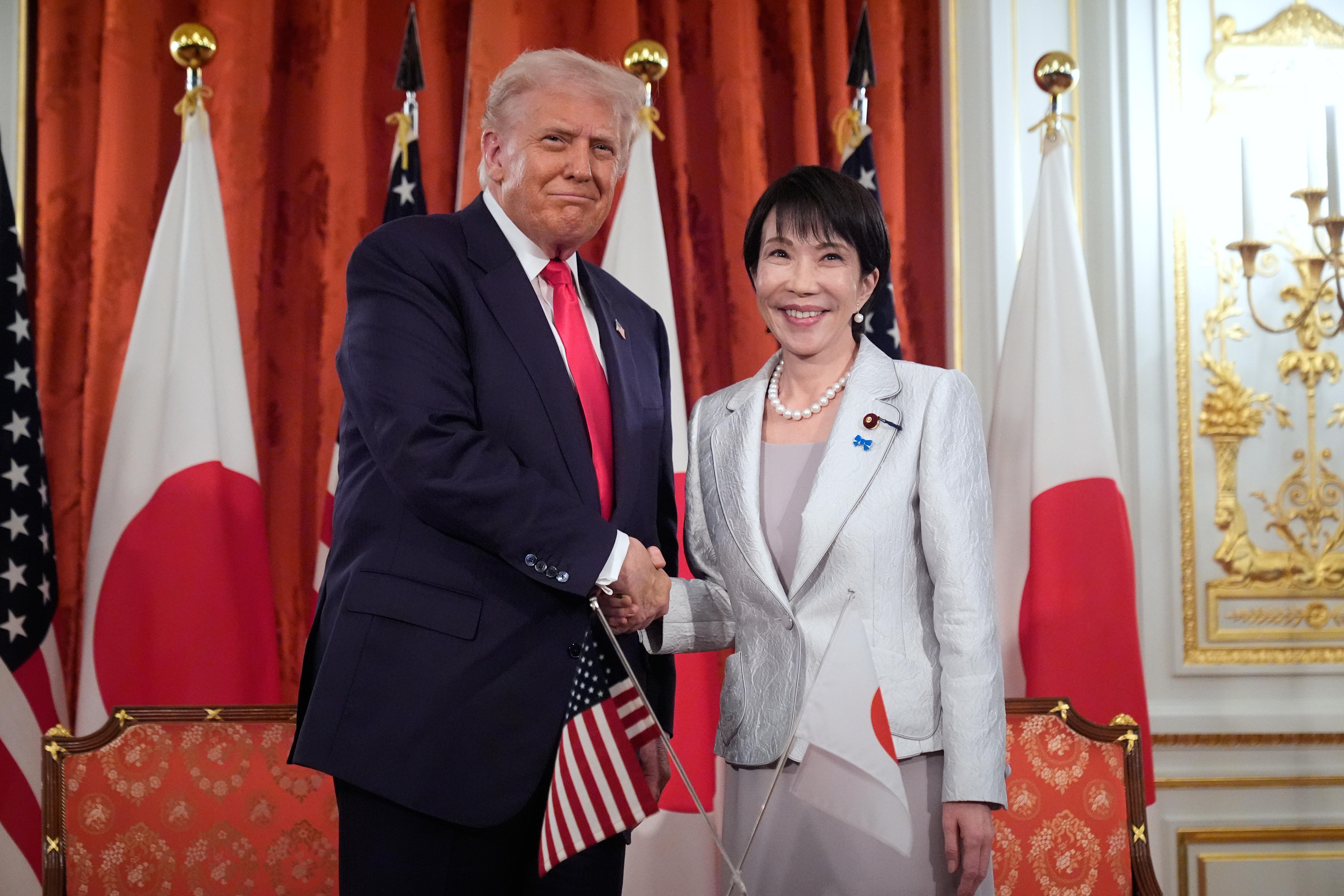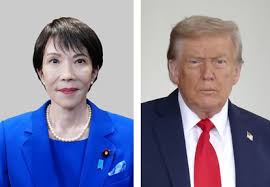When former U.S. President Donald Trump stepped onto Japanese soil this week, it was supposed to be a carefully choreographed diplomatic visit. But what unfolded inside Tokyo’s State Guest House has turned into one of the most talked-about political moments of the season — not because of the policy announcements, but because of
Prime Minister Sanae Takaichi’s behavior toward her American guest.
Video and photographs from the meeting show Takaichi guiding Trump with visible warmth and precision, bowing deeply as she invited him to sit, and even adjusting his seat placement herself — gestures rarely seen at such a high level. To some, it was a display of Japan’s famed courtesy; to others, it bordered on
symbolic submission.
🇯🇵 A Meeting of Unequal Optics

Observers noted that while Trump appeared relaxed and confident, Takaichi’s demeanor was unusually deferential. She bowed repeatedly, avoided interrupting him, and smiled throughout the exchange. Even as aides attempted to lead Trump through the official schedule, Takaichi stepped forward personally to guide him — a gesture that, in Japan’s culture of hierarchy, carries meaning.
“She treated him almost like a monarch,” said political analyst Kenji Sato on NHK. “It was deference beyond protocol. Japan wanted this meeting to look harmonious at any cost.”
The context, however, matters. Takaichi — Japan’s first female prime minister and a protégé of the late Shinzo Abe — took office only weeks ago. Her administration faces pressure to stabilize relations with Washington while navigating a tense security environment in East Asia. According to the
Washington Post, the visit was intended to secure U.S. support on trade, rare-earth minerals, and defense coordination amid growing concerns about China’s assertiveness.
🎯 A Calculated Gesture, or Political Risk?

Diplomatic experts say what appeared to be exaggerated subservience might in fact have been a strategic charm offensive.
“In Japanese diplomacy, formality is language,” explained Professor Rika Yamada of Tokyo University. “Every bow, every gesture communicates respect and reassurance. Takaichi needed to convey loyalty to the alliance — especially to a figure as unpredictable as Trump.”
Still, the images went viral. On social media, hashtags like #TrumpInTokyo and #TakaichiBows trended for days. Some Japanese commentators expressed embarrassment, arguing that the prime minister’s behavior undermined her authority at home.
“She looked more like an aide than a head of state,” wrote one editorial in Asahi Shimbun. “In trying to flatter, she may have lost stature.”
💬 Trump’s Reaction — and America’s Response
Trump, who thrives on symbolic power, seemed entirely at ease with the attention. He praised Japan as “a loyal friend and great nation,” joking that “Tokyo treats me better than Washington ever did.”
That remark sparked fresh criticism back in the United States, where an anti-authoritarian movement dubbed “Reject the King” has gained traction in recent weeks. Illinois Governor J. B. Pritzker joined protesters at a rally, saying,
“Democracy doesn’t kneel — not to kings, and not to egos.”
For critics, Takaichi’s conduct was a troubling reflection of how world leaders may adapt to Trump’s personality. For supporters, it was a masterclass in diplomacy — a reminder that courtesy can achieve what confrontation cannot.
🌏 Behind the Optics — Real Agreements
Lost in the spectacle were the substantive outcomes of the visit. The two leaders reached new understandings on critical-mineral trade and joint defense research. Trump hinted at lifting tariffs on Japanese car imports, while Takaichi pledged increased investment in U.S. semiconductors.
Yet even these achievements were overshadowed by the body language that dominated headlines.
“The picture of her bowing will outlive the policy,” remarked analyst Sato. “In diplomacy, symbolism is forever.”
✍️ The Larger Lesson
Whether one sees deference or diplomacy, the Tokyo encounter revealed a deeper truth about global politics: power is as much about posture as policy.
Takaichi may have intended to preserve harmony, but she also reminded the world that leadership is often a delicate balance between humility and dignity. And Trump — accustomed to American critics — found himself, at least for one afternoon, treated like royalty on foreign soil.
The Silent Spark at the US Open






